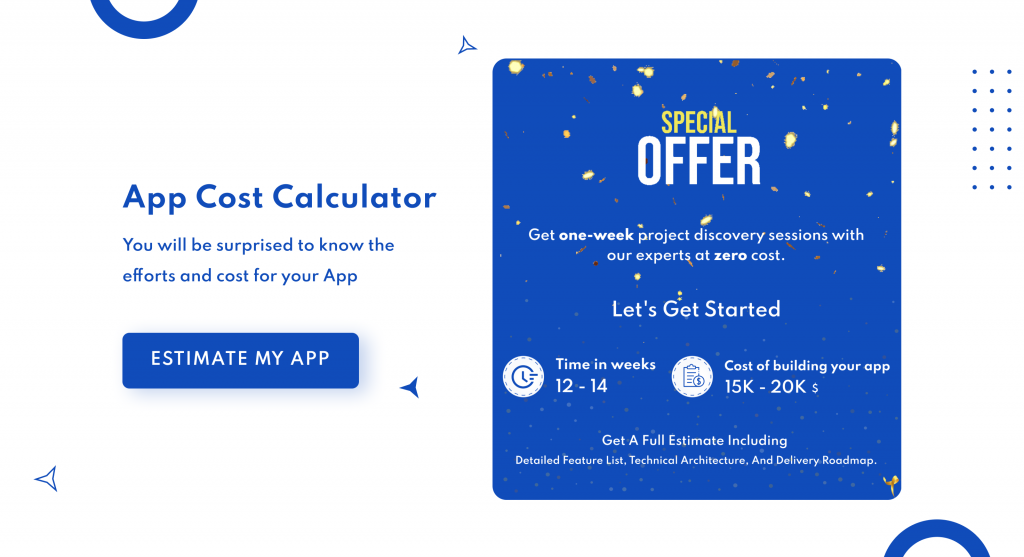Progressive Web Apps Development Guide: Benefits, Cost, Characteristics & Examples
Rahul Motwani
August 08, 2022 866 Views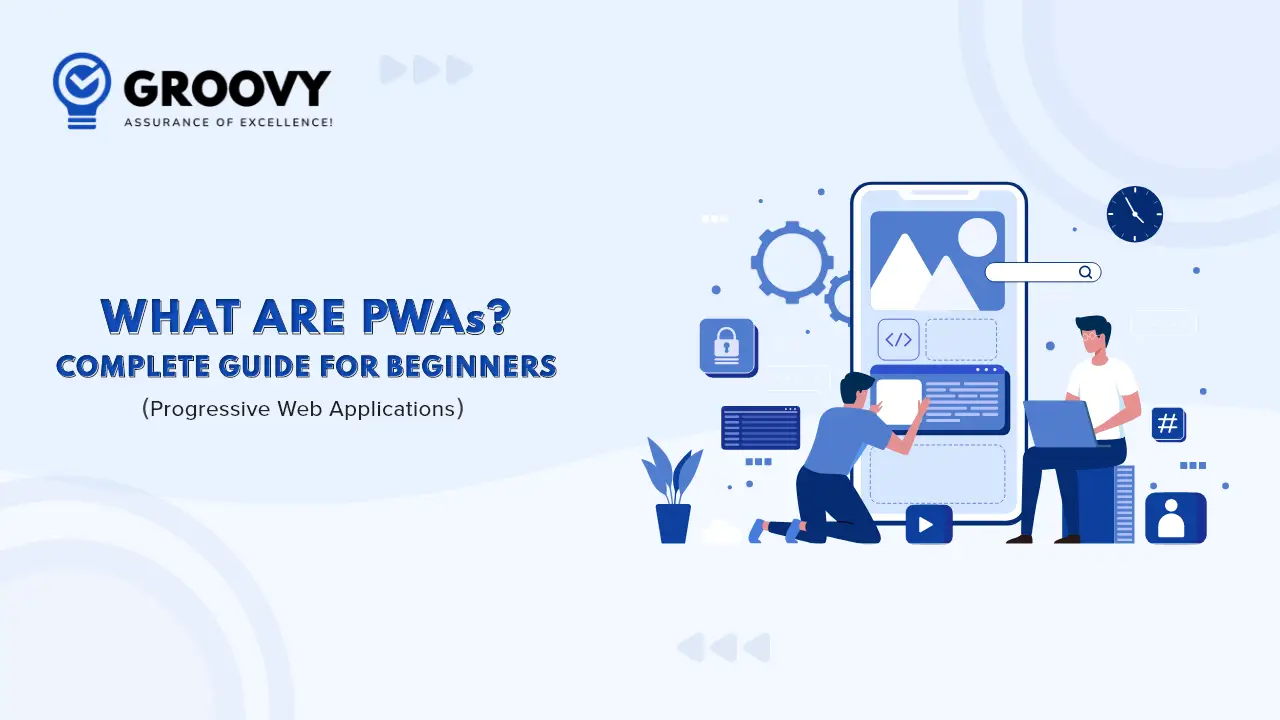
Quick Summary : Progressive web application also known as advanced web applications. It developed using common web technologies using HTML, CSS, JavaScript, and WebAssembly. It is designed to function on any system that makes use of a standards-compliant browser, which includes desktop and mobile devices.
Incredibly, the internet is an excellent platform. As a result of its wide range of platforms, user-centred security approach, and the fact that a single firm does not control it, the web is an excellent platform for developing software. You may search it and share the results with anybody because of its intrinsic linkability progressive web app iOS. To make a website experience as short-lived or long-lasting as desired is entirely up to the user.
It’s well-known that platform-specific apps are very robust and feature-rich. They’re always there to greet you on home screens, docks, and taskbars. They are released as a different products.
Files and data saved on your device may be accessed and modified, as well as data that is stored in the local file system and can be accessed through USB or Bluetooth—taking images, viewing what songs are now playing, or managing song playback while in another app are just a few things you can do with these apps. It’s as if platform-specific apps are an integral component of the hardware they’re running on.
1. What is a PWA? Or PWA Meaning?
Progressive Web Apps (PWA) are developed and updated using current APIs to provide greater functionality, dependability, and installability while reaching anybody, everywhere, on any device with a single code base.
Below is the Complete Progressive Web Apps Development Guide (PWAs)
The Three Pillars of PWA applications are:
Progressive Web Apps are web programs that are powerful, dependable, and installable. These three pillars convert them into a platform-specific application-like experience.
1. Capable
Today, the web is fully competent on its own. Using WebRTC, geolocation, and push notifications, for instance, you may create hyper-local video chat software. With WebGL and WebVR, you can make the app installable and its discussions virtual. WebAssembly enables developers to use various ecosystems, such as C, C++, and Rust, to bring decades of effort and capabilities to the web limitations of progressive web apps. Squoosh uses this. App for its superior picture compression.
2. Reliable
Regardless of the network, a reliable Progressive Web App feels quick and dependable.
Speed is essential for attracting consumers to your experience. As page load times climb from one second to 10 seconds, the likelihood of a user bouncing increases by 123 percent. The performance continues beyond the onload event. Users should never question the validity of their interactions.
3.Installable
Installed Progressive Web Apps operate in a window separate from the browser tab. They may be launched from the home screen, dock, taskbar, and develop web application. It is possible to search for them on a device and move between them using the app switcher, making them seem native to the device on which they have been installed.
2. Why Progressive Web Apps?
PWAs provide superior products to their native app counterparts. They begin working immediately and may be accessed at any time, but they do not use the vital memory or data of the smartphone. Users that utilize a PWA rather than the native version of the same application result in lower overall data consumption.
People could not get enough native applications when they initially became available on the market. It altered how customers engage with their mobile devices and their patronage companies.
Despite this, the current trend shows that consumers are moving away from using applications. If you have been putting off establishing a mobile-friendly website or a native app for your mobile device, you are really at an exciting crossroads.
Many well-established companies have previously been through the challenging process of developing a native mobile app experience for their clientele. However, a capable PWA may replace a company’s mobile website, its native application, and perhaps even it is the desktop website.
3.How much does it cost to develop a PWA (Progressive Web App)?
Starting from $5K, Yes! That’s true; Mobile App development begins with the lowest at $8/ Hour with Groovy. The cost of building any app depends on different factors such as app complexity, UI/UX designs, feature set, etc. So, It’s necessary to work on the scope document to get an estimate cost for PWA app development.
4. Characteristics of PWAs
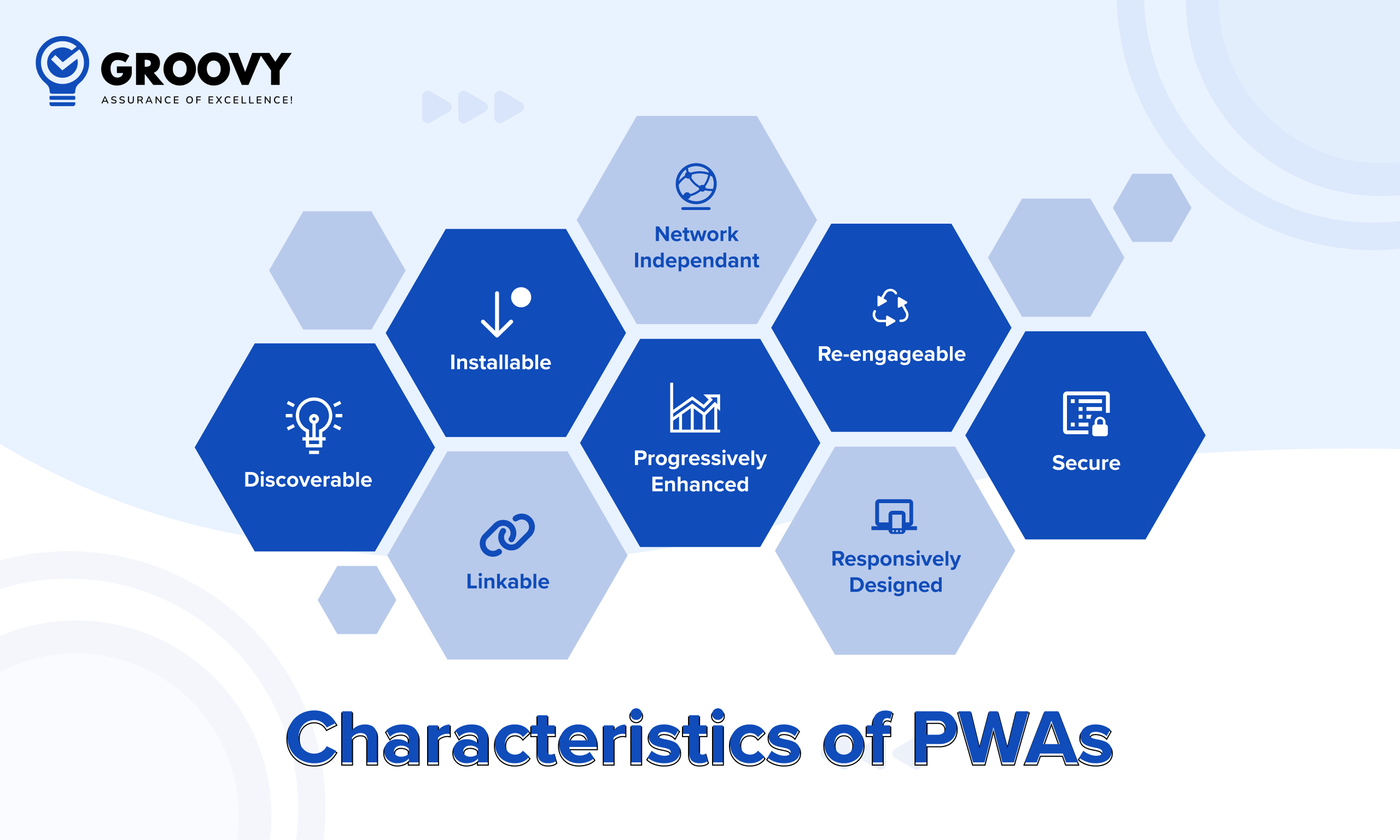
PWA regarding the features it should offer and the user experience it should share with the user. You may use an add-on for Google Chrome called Lighthouse to examine the capabilities of advanced web applications if you ever need to reactjs mobile app development. You will find a collection of our thoughts on the most critical aspects of the technology that make it worthy of your consideration below.
Easy Installation
Similar to other general websites, progressive web applications are searchable over the internet. Since progressive web apps is not accessible through Apple App Store or Google Play Store, they are clustered as applications by search engines. Such applications are shared through URLs. A user requires to go to the equivalent site and select the “Add to Home screen” on the menu of the browser to easily install the application on a device.
Mobile-first
Responsive web design is becoming more common, yet there is always room for improvement. You should not only make sure that your app looks beautiful on the mobile device, but you should also ensure that it provides value to your user in the best possible manner regardless of the context.
This includes whether the user is strolling along a busy street, driving a vehicle, or playing with kids. In each of these scenarios, individuals use the web on their mobile devices, and it is your responsibility to ensure that their experience is as hassle-free as possible.
Cost Effective Development
PWA development is very cost-effective because it requires technologies and skills that you were practising for many previous years. PWA use pure HTML, JavaScript and CSS that ultimately decrease the time and cost of the exclusive development.
Fast
A decent progressive web app has to have lightning-quick load times. There are a lot of different approaches you can use to make your application run faster. Remember that having a brisk business has the most significant influence in terms of engineering on your company since this is the most crucial fact to keep in mind regarding being fast.
Offline Works
One of the most popular features to ever appear on the web. Users can still view and utilize websites even when the mobile device is disconnected from the network or set to airplane mode. This is made possible by service workers and the relatively recent API that is included in current browsers.
Building an offline experience is a transition to the native mobile app experience. It requires a somewhat different user interface (UI), comparable to the one seen in native applications, also known as the Google App Shell Model reactjs mobile app development.
Add to Homescreen Capability Possible
The user can add a link to your web app on the home screen of their mobile device by using this simple feature, which can be found on your mobile app. It is compatible with iOS and Android even if you cannot match the remaining PWA features.
5. Differences Between PWAs and Native Apps
Development cost
Developing an app from scratch as well as maintaining it can become pretty expensive. The fact is that a PWA is cheaper than building a native application. Besides that, native applications need minimum of two versions, 1 for each platform, & additionally, they require resources to maintain as well as update both versions.
PWA is faster and easier to build & update. In contrast with a native application, a PWA utilizes a single codebase for every platform. Rather than developing an application, you are able to configure your website through tools like Google Lighthouse. Use responsive design, & you will require an only a single version of the application that will show identically over all devices.
In terms of Development
The creation of a progressive web app and the development of a native app in fact, two quite distinct processes. When seen from the point of view of a programmer, native applications are designed to be loaded on mobile devices such as smartphones, tablets, and other intelligent devices depending on the hardware and operating system associated with the device.
PWAs, on the other hand, are essentially webpages that have been formatted to seem like apps and that can either be launched inside a website browser or loaded directly onto the device and used in the same manner as a native app. PWAs are also known as advanced web applications.
Programming languages
PWAs are produced using CSS, Javascript, and HTML, but native applications are developed with the programming language specific to each platform. Java is the most prevalent language for Android.
At the same time, Swift or Objective-C is the programming language that is used to construct iOS apps—since of this, constructing a PWA is considerably quicker and more straightforward than a native application because you need to design a single version that can be flawlessly shown on the web browser of almost any mobile device.
Access to Additional Features
After installing a web app, you will have access to additional features. Shortcuts on the normally unavailable keyboard become accessible when operating inside a browser. Progressive Web Apps can register for the ability to accept material from other apps or to take on the default application role for various file kinds.
When a Progressive Web App is moved out of a tab and into a standalone app window, users’ perceptions of the app and interactions with it undergo a radical shift. While this is not the case in native application development.
6. Benefits of Progressive Web Apps
There are native, single-page, and hybrid applications. However, the app that best fits your company will depend on its demands, requirements, and the essential services it will give its customers.
Similar to a Native App
Now, people prefer mobile applications over web browsers and vice versa. Everything is dependent on usability and individual preferences. Nonetheless, there is a trend that makes mobile apps the superior option.
Rapid and Simple Installation
PWAs are installed on any device just through the web browser or browser extensions because some web app needs extensions.. With this functionality, user desertion of an online application is significantly reduced, and the user experience is markedly improved. The installed application stays accessible from the desktop or mobile device’s home screen. In addition, it is not necessary to install the PWA app to use it since it can also be accessed by URL.
Enhanced Efficiency
A progressive web app’s performance increases due to its ability to work efficiently, operate like a website, cache, and provide text, graphics, and other material. This software increases website load time, user experience, retention rates, and client loyalty.
Employed Everywhere
PWAs are capable of working everywhere. Users who often switch devices may access cross-device help anywhere. This is done to meet consumers’ needs, ensure that they receive a consistent experience, and contribute to business automation, particularly for companies that rely on PWAs, as they need to know the platform or app version of the software their employees use performs optimally.
Operating Offline
In addition to functioning everywhere, PWAs may also function offline. Consequently, when your network connection is unreliable, this sort of application will continue to function as a clock, albeit in offline mode. Due to the built-in service workers, the PWA’s features and data are preserved and cached. This permits access to the PWA without downloading it, mainly when the connection is weak.
7. Requirements to Build your First PWAs
Mobile traffic now accounts for more than half of the web’s total traffic, so web applications allow users to perform things in the browser that match native apps. Yet, the quality of connections and devices varies considerably everywhere across the globe. The following usability problem is to cater to users in Seoul with lightning-fast connections and consumers in rural India with obsolete phones, and Progressive Web Apps are the answer.
To ensure that all your users receive the same core experience as rapidly as feasible, Progressive Web Apps (PWAs) employ progressive enhancement. PWAs are the best way to get your message to the most significant potential audience.
HTTPS is The Preferred Method of Serving.
The truth is, you should have been doing this already. Securing your site with an SSL certificate can make your customers feel more confident about using it. HTTPS is required for the use of service workers in PWAs and the installation of the home screen. For a low price, you may buy an SSL certificate from your domain name registrar and then configure it via your web hosting provider.
Create a Shell for An Application
First impressions are everything. Thus, making a good impression with your app’s shell is essential. The fastest way to guarantee that your user doesn’t spend too much time gazing at a blank screen is to display it thoroughly in your index HTML page, using inline CSS. In the progressive enhancement pattern, the application shell is part of the process. As additional data (most likely JavaScript) is loaded, your app should gradually improve the content it provides to the user.
Manifest File
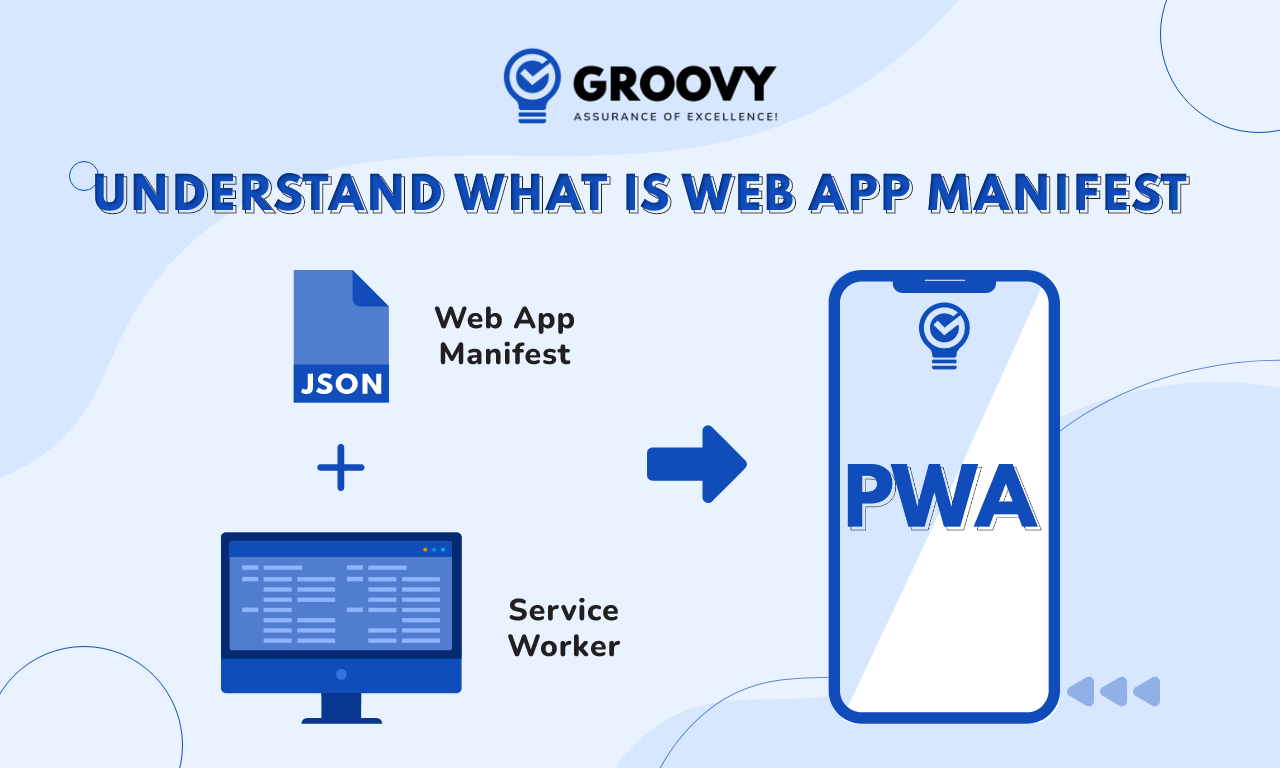
It is actually a JSON file which is made with a generator. The manifest file comprises the information that lets you know how your progressive web application should look and work. It facilitates you to find out the name, icon, description, colors & added features of your progressive web application.
Here’s an example of a manifest file:
{
"short_name": "GroovyBlog",
"name": "GroovyBlog",
"description": "Innovative Blogs on Mobile App Development - Web Designing & Custom Software Development",
"theme_color": "#eb5252",
"background_color": "#000000",
"display": "fullscreen",
"Scope": "/", "orientation": "portrait",
"icons": [
{
"src": "images/android/android-launchericon-48-48.png",
"type": "image/png",
"sizes": "48x48"
},
{
"src": "images/android/android-launchericon-96-96.png",
"type": "image/png",
"sizes": "96x96"
},
{
"src": "images/android/android-launchericon-192-192.png",
"type": "image/png",
"sizes": "192x192"
}
],
"start_url": "index.html?utm_source=homescreen"
}
Service Workers
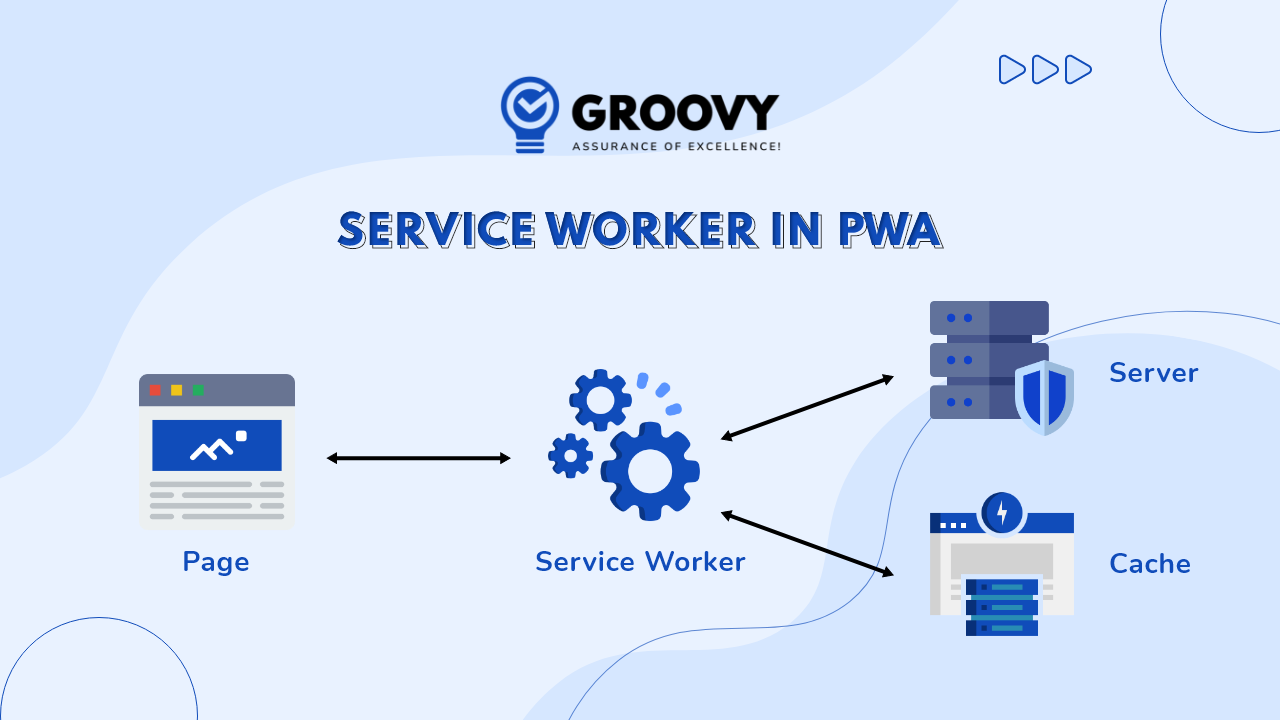
It is another critical technology for progressive web applications. Service workers assist your application work offline as well as carry out run background tasks and advanced caching. They can carry out tasks also when your progressive web application is not running.
Following are some other functions that are relevant to the Service Worker:
- Badging icons
- Running background fetch tasks
- Sending push notifications etc…
Sign Up for Someone to Help You Out
You’ll need a service worker to use all the PWA features (push notifications, caching, and install prompts).
We’ll take the next step if the user’s browser supports service workers. The service worker file, now named serviceworker.js, should now be registered. At this moment, there is nothing extra you require in that file.
Make Use of Push Notifications
Using the web Push API, your users may get push alerts from your service workers. You may use self.registration.pushManager in your service worker code because the delivery of push notifications is strongly dependent on your backend configuration.
8. Top Progressive Web Apps Frameworks
PWA is a cross-platform app development strategy that distributes web pages via mobile browsers. It’s a hybrid app/mobile website that leverages CSS, HTML, and JavaScript to offer an app-like experience. PWAs are compatible with OS systems and mobile devices since they’re browser-based (tablets and smartphones).

Prime PWA frameworks for Progressive Web Apps
1. Angular
Angular leverages JavaScript to build dependable and robust Progressive Web Applications. Google introduced Angular in 2010, and owing to its modular structure, it has become the most used PWA framework.
2. ReactJS
Facebook established the programming framework React, which has a bigger developer community than Angular. Because of its adaptability, it is the most popular framework among developers.
3. Ionic
Ionic is an Angular and Apache Cordova-based framework. It is the most often used framework for developing hybrid applications.
4. Vue
Vue is a relatively younger framework difference between React and Angular. It is comparable to React since it utilises Virtual DOM for rapid rendering.
5. PWA Builder
PWA Builder converts your website into a Progressive Web App. Microsoft’s PWA builder promotes easy and fast PWAs.
6. Polymer
Polymer, an open-source framework created by Google, makes it easy to create Progressive Web Apps.
7. Svelte
Svelte is a newcomer to the market, having debuted in early 2019. The best benefit of Svelte is that it is really simple to learn for everybody. Due to this, practised front-enders will swiftly understand the principles and basic assumptions of the functioning of Svelte.
* PWAs don’t need smartphone installation.
* PWAs are technically websites. Therefore, SEO may increase its search ranks.
* PWA push alerts engage users.
* It offers offline app-like UI/UX.
* The PWA isn’t manually updated. Auto-updates occur.
9. Example of PWAs
A high degree of performance, independent of the device or network conditions, is the goal of the front-end technology. They can do this by adding native-app attributes like dependability, speed, and interactivity to PWAs. While PWAs have received considerable attention, most individuals are unfamiliar with the notion. Look at some excellent progressive web apps to better understand how PWAs are different from traditional responsive webpages. The examples are
- Facebook PWA.
- Forbes PWA.
- Pinterest PWA.
- AliExpress PWA.
- Flipkart PWA.
- Telegram PWA.
Conclusion
Wrapping Up, PWA applies to various subfields within the field of technology, ranging from PWA games to PWA. You can get the best assistance from the Groovy Web to make things perfect for your business development.
Written by: Rahul Motwani
Rahul Motwani is an experienced Project Manager with a demonstrated history of working in the information technology and services industry. He started his career as a Backend developer and currently has his hands-on managing projects at Groovy Web. He is a strong program and project management professional with a Bachelor's degree focused on Computer Application.
Frequently Asked Questions
We hope these clear your doubts, but if you still have any questions, then feel free to write us on hello@groovyweb.coAre PWA The Future?
Eventually, most native apps will be replaced by progressive web applications; in that scenario, it might be possible the PWA will be the future of the web. Progressive web apps function as a bridge between webpage and native applications.
Why are Progressive Web Apps Faster?
PWAs have service workers that serve to cache and tap into a device. That's why progressive web apps are faster and more seamless experiences.
Related Blog
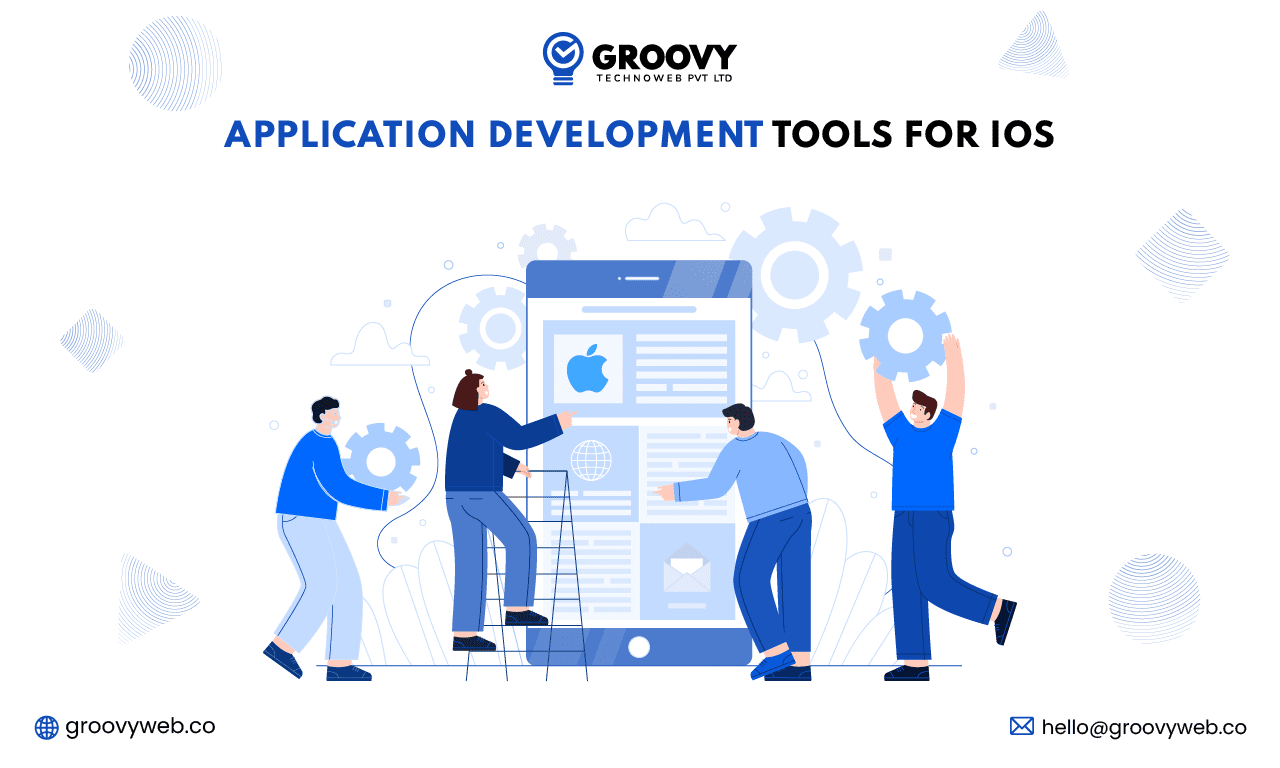
Rahul Motwani
Best iOS App Development Tools for Startups
Mobile App Development 08 Jun 2023 6 min read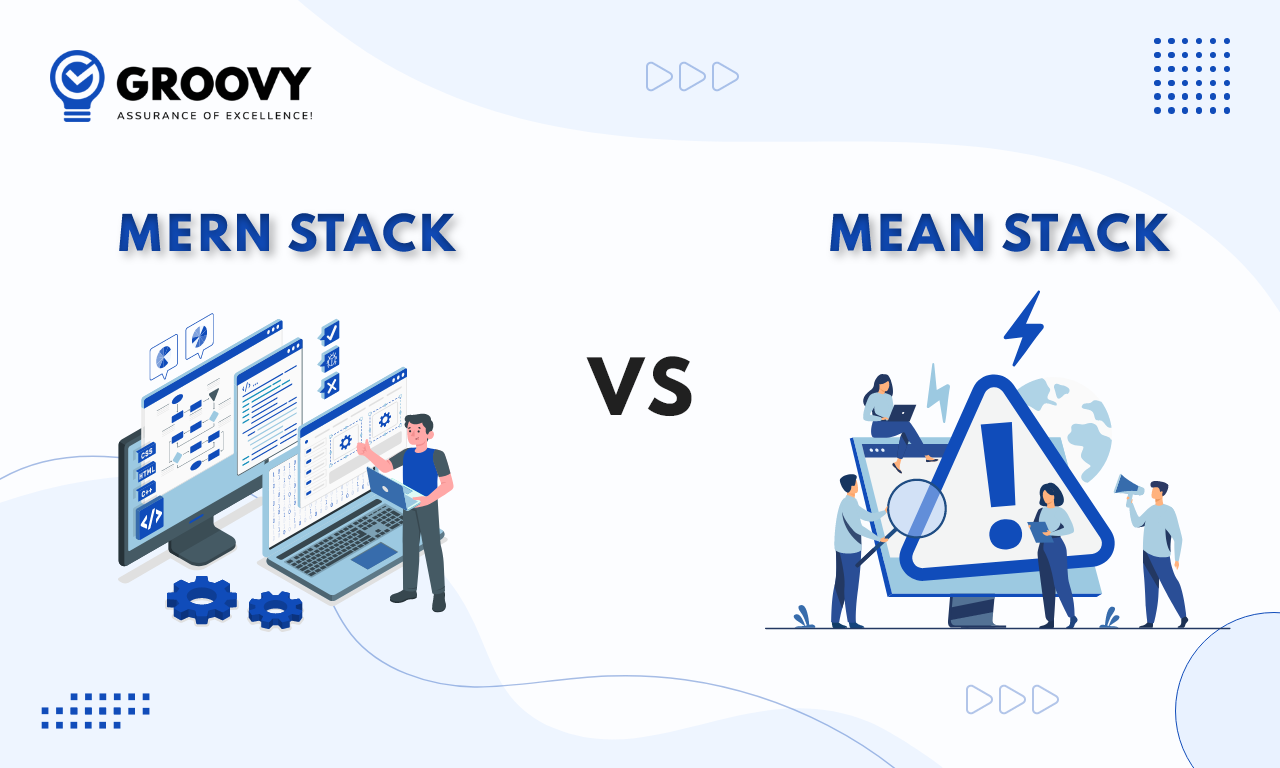
Sagar Patel
MERN stack vs MEAN stack: Detailed Comparison
Web App Development 23 Oct 2023 12 min read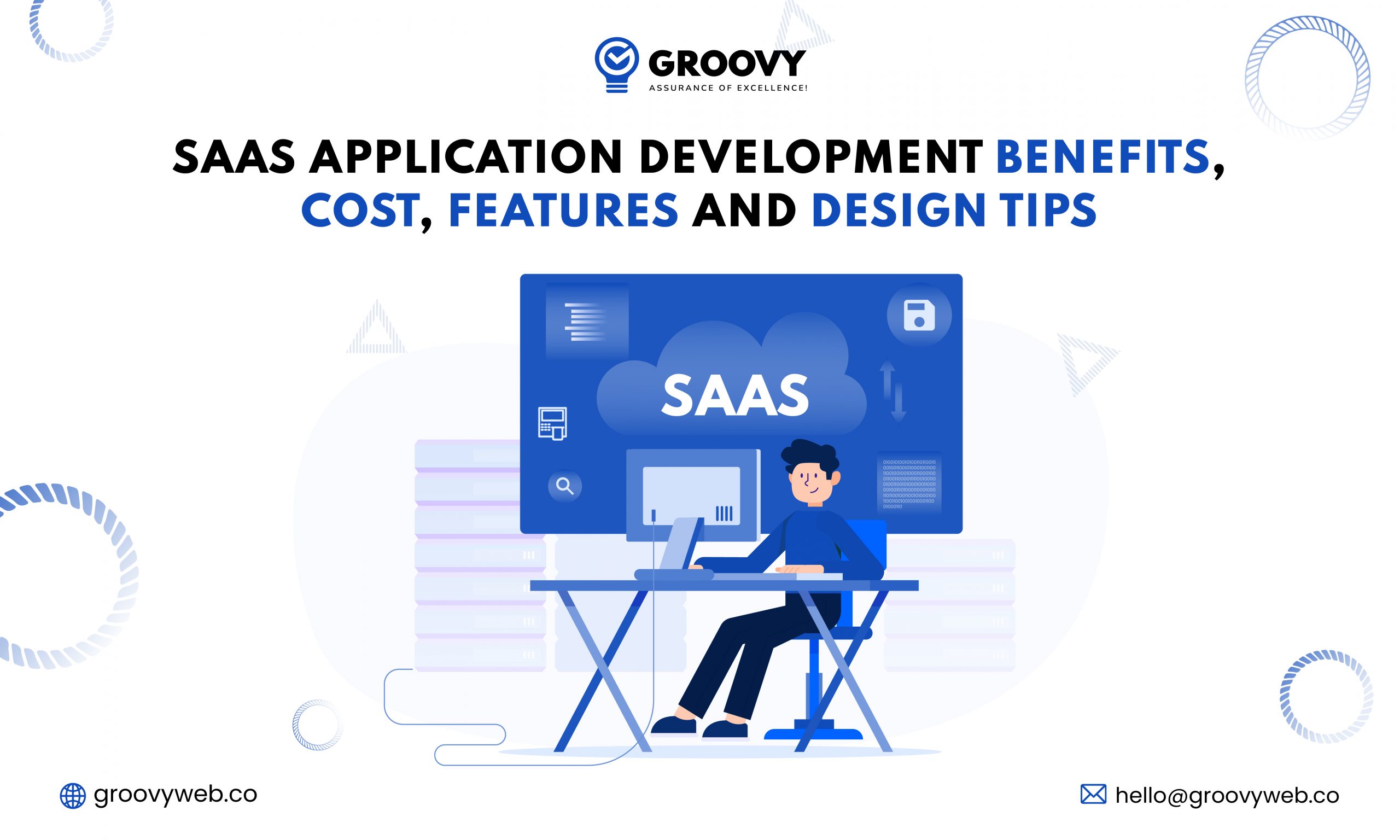
Rahul Motwani
SaaS Application Development Benefits, Cost, Features & Design Tips
Software Development 06 Feb 2023 15 min readSign up for the free Newsletter
For exclusive strategies not found on the blog
